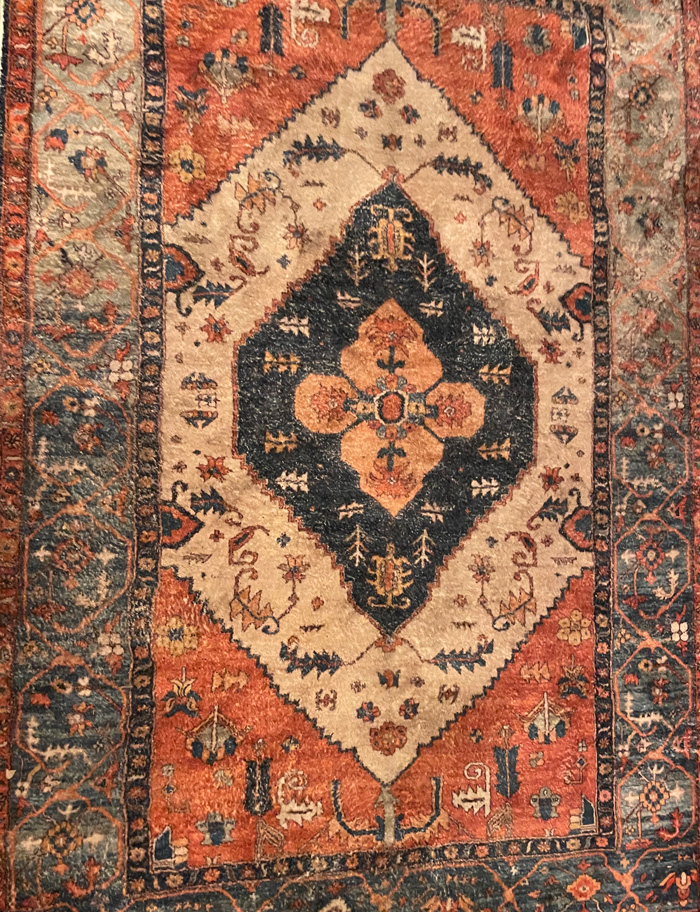To rework a popular adage, you wait forever for a Persian restaurant to arrive in your neighborhood and then suddenly two come along at once.
It was only a few weeks ago that I reviewed Medi Kitchen, an upscale, white-tablecloth new restaurant on Bank Street in White Plains. Like Medi Kitchen, the recently-opened Shiraz Kitchen & Wine Bar also has “kitchen” in its name. And like Medi, too, while rightly trumpeting its Iranian credentials, Shiraz looks slightly longingly west towards the Mediterranean, even pointing out how saffron, used in many of its dishes, is “Mediterranean.” That is undoubtedly true. Arguably the best saffron in the world comes from the arid plains of La Mancha, in Spain”™s southwest, and yet this most expensive of spices is also inherently Iranian ”“ hence its omnipresence in Persian cuisine.

My slightly tortuous point? Tehran, or for that matter the city of Shiraz itself, is a thousand miles from the Med, and Iranian cuisine can, indeed should, stand on its own two feet.
It certainly does at Shiraz Kitchen, which relocated from Elmsford following a fire in another part of the building it shared. (Owner Reza Parhiskaran also has a restaurant by the same name in Manhattan.)
Under the heading “Taste,” Shiraz”™s starters include Kashk-e-Bademjoon, fried eggplant with fried onions and whey, and its blander but no less satisfying cousin, Mast-o-Bademjoon, which loses the onions and replaces them with yogurt. Yogurt features heavily in other starters, too ”“ strained with za”™atar and olive oil in a beautifully simple labneh; and in Boorani-e-Spinach, a bowl of fresh and fragrant steamed spinach with onion and garlic. Dried yogurt ”“ fast becoming a foodie thing ”“ is used to great effect in Ash-e-Reshteh, a carefully constructed soup of beans, peas, spinach and Persian noodles, like an Italian pasta e fagioli, but with more bite.
A plate of piping hot pita, fresh from the bread oven, was dropped as a gift, the bread fresh and aromatic, but it was hard to know what to do with the mound of heady tarragon, basil and mint leaves, as well as a slightly dry square of feta beside the bread. Some salt and olive oil would have been the obvious add-ons to pull this generous plateful together, although olive oil, while a Mediterranean staple, is not widely consumed in Iran. That dish, I must admit, left me baffled.

Cue main courses, where on two visits to Shiraz a few days apart, it was the bolder entrées ”“ a Ghormeh Sabzi beef stew with red kidney beans, lime and saffron rice, and Fesenjoon, meatballs with ground, toasted walnuts in a pomegranate paste ”“ that I thought the most successful. I would also mention Shandiz, a combination platter of lamb chops and chicken with dried barberries and pistachios, which would be a good way to sample both these meaty mainstays in one dish, while a lamb shank ”“ soft almost as butter and falling from the bone, its flavor pronounced but not “mutton-y,” proved the ideal dish for lamb lovers.
Vegetarians do well, too, at Shiraz Kitchen, in particular with a dish of char-grilled vegetables with sour cherries and pistachios, and a delicious Persian vegetable stew, comprised of eggplant, potatoes, sour grapes and barberries. Even the diehard carnivores in our party enjoyed sampling this particular dish.
Look out, too, for the specialty basmati rice side dishes, for which saffron, insisted our booted, suited and vested server, would be used “as a garnish.” Not quite understanding how saffron could be used in such a way, I learned that the rice dishes were mildly flavored with saffron, their respective toppings ”“ orange zest, almonds, barberries, etc. ”“ then added. Very good they all were, too.

Not usually dessert eaters, two of us were particularly taken with Rollet, a wonderfully moist sponge cake with whipped cream. And Shiraz”™s homemade saffron ice cream and pistachio gelato were two more winning desserts, both with subtle but unimpeachable flavors.
As for the premises, they happily break the mold of the somewhat same-y ”“ dare I say, faceless-looking ”“ restaurants along this anodyne stretch of Mamaroneck Avenue. A Persian carpet at the entrance, leading to a comfortable small sitting area between the bar and the large street windows, and ambient soft lighting throughout, give the large space a pleasing intimacy. To the right of the bar, the restaurant”™s two, long “twin” rooms are divided almost seamlessly by a “wall” of wine bottles attractively stacked on glass shelves in free-standing units.

As Shiraz the restaurant doubles as a wine bar (the long bar, with 15 barstools, runs nearly the length of the long rooms) ,it is worth mentioning the 150-strong wine list, which offers an eclectic choice of predominantly European and American labels, with some extravagant French Grands Crus and Super Tuscans. We were happy drinking a more modest but smooth-as-silk Laetitia Pinot Noir from Santa Barbara County, one of the 20 or so excellent wines also available by the glass. The bar prepares signature cocktails as well, many of them made with typical Persian ingredients, like saffron, pomegranate juice, rose water and cardamom.
Whether your tastes lean more towards the Mediterranean or the Middle East, lunch or dinner at Shiraz Kitchen promises culinary adventure in a pleasingly unfamiliar, charming atmosphere.
For reservations and Shiraz Kitchen”™s new online store, visit shirazkitchen.com.




















